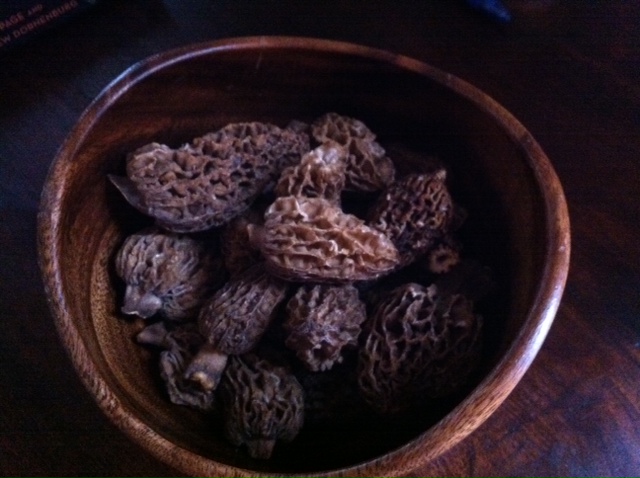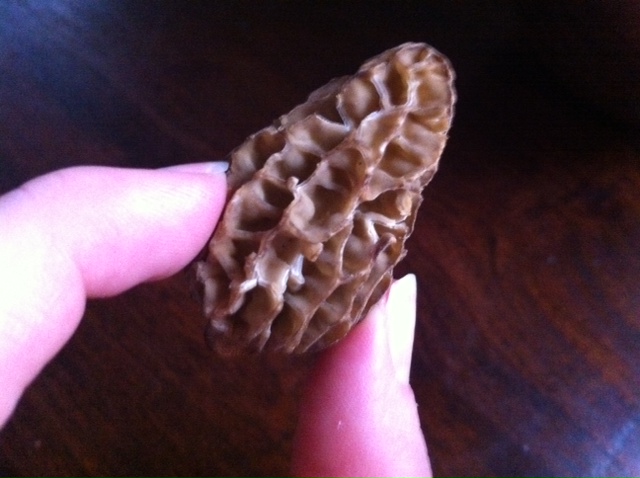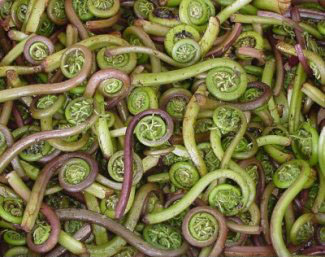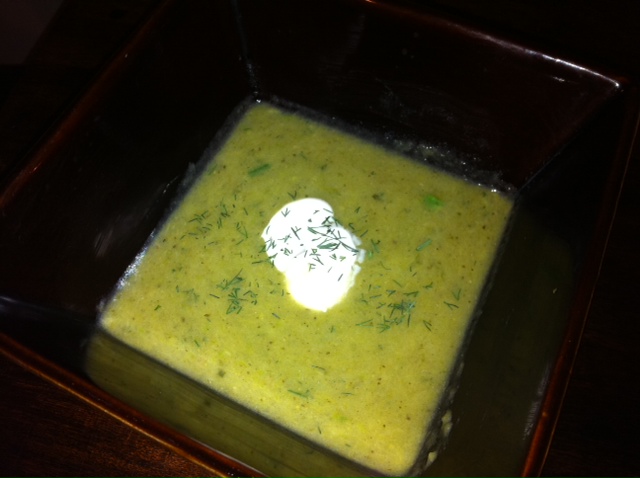25 Apr
The Morel of the Story …
First, I want to warn you that there is no recipe herein, only a cautionary tale. As I’ve said before, part of my charter is to share the fruits of my experiments, both the successes and failures, so that you don’t have to endure the heartaches I have. That said …
Earlier this week I undertook to make something with morel mushrooms for the first time (pronounced “more-ELL,” contrary to what my post title pun would suggest). Actually, my original intent was to capitalize on the short-lived fiddlehead fern season and make something with fiddleheads again, and since I just recently bought this new cooking reference, The Flavor Bible, I looked up fiddleheads to see what accompaniments America’s greatest chefs recommend for them. You guessed it, morel mushrooms. And I thought “Yay, I’ve always wanted to cook insanely expensive mushrooms in an experimental recipe that is bound to epically fail!” Just kidding. Actually what I thought was, “Yay, I’ve always wanted to cook insanely expensive mushrooms that have the consistency of tripe and are notoriously difficult to rid of grit, rendering their resulting dish inedible.” OH, I’m still kidding. What I really thought was “Yay, mushrooms that look like brains are just like what Mom used to make!”
Okay, enough. What I really thought was “I think I’ll go with chanterelles, unless Whole Foods doesn’t have chanterelles, in which case I’ll get the most interesting mushroom they have that seems in good shape.” But I was never expecting Whole Foods to have morels. No one here ever has morels. Nevertheless, there they were. So I decided to go for it. Everyone raves about them and all. And I’m an adventurous cook if anything. What could possibly go wrong?
Oh SO MANY things went wrong. You know, in retrospect, I probably should have taken it as an omen when, earlier that day as we were driving past a golf course near our house which we’ve driven by HUNDREDS of times, a golf ball came flying out of nowhere and bounced off the hood of my car while we were driving about 50 mph. Certainly you could say we were lucky that it didn’t hit and break our windshield and kill one or both of us, so don’t get me wrong – I’m definitely grateful. But I can’t shake the feeling that the statistical unlikelihood of such an event is actually hard proof of my UNluckiness. Certainly it carried the portent of imminent mushroom disaster.
But I digress. Morels.
They’ll warn you that morels are gritty and should be carefully cleaned to rid them of grit and creepers. At the same time, they’ll tell you not to have them in water too long because it will rob them of their flavor. I can verify that the former is definitely true. I can’t comment on the latter because I don’t know what my morels tasted like before I rinsed and soaked them, but I do know that the resulting flavor of the still grit-inclusive morels I had was not remarkable in any way, and certainly did not offset the unpleasant tripe-like consistency either.
I won’t bore you by relating my subsequent misadventures with the vegan gnocchi I served them with – that’s another story for another day. I will leave you instead with a solemn word of caution that if you undertake to prepare morel mushrooms, do take the cleaning of them very seriously. For your information, here are the steps I followed, which were clearly insufficient:
- Shook vigorously in a paper bag to dislodge any easily dislodge-able debris
- Tapped each mushroom several times on a hard cutting-board surface to shake out any remaining bits
- Plunged and swirled mushrooms in bowl of cold water, discarded water & repeated 5 times
- Sliced each mushroom in half and rinsed out insides
- Inspected for remaining schmutz – didn’t see anything
So anyway. In my research I found a few sources who recommended soaking them for a long period of time in water or even in salt water (in case of unwanted crawlie guests), though I found far more sources claiming that they should only be briefly submerged to avoid the afore-mentioned flavor weakening. I thought my approach was a safe compromise but apparently not. The morel of the story is I’m not sure that morels are worth it.
I’d welcome your thoughts and experiences of morels – anyone?






Recent Comments